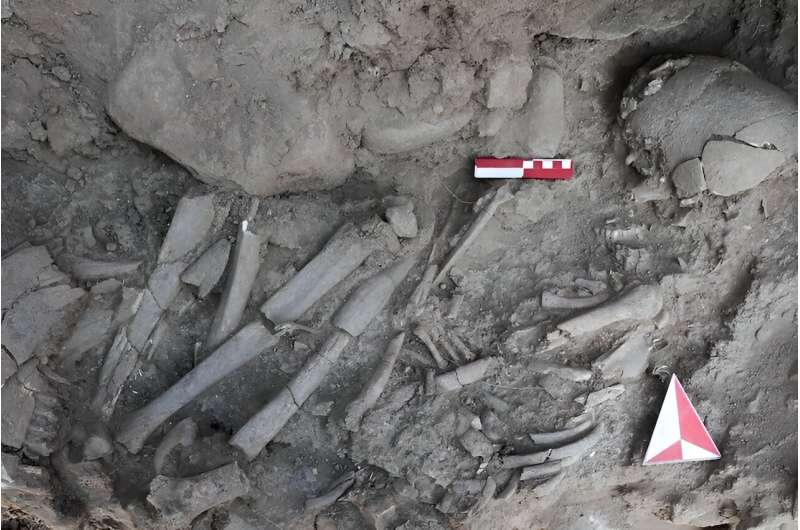July 31, 2024 report
This article has been reviewed according to Science X's editorial process and policies. Editors have highlighted the following attributes while ensuring the content's credibility:
fact-checked
trusted source
proofread
Woman buried 12,000 years ago in Turkey may have been a shaman

A small team of archaeologists in the Republic of Türkiye has identified a woman who was buried approximately 12,000 years ago in a neolithic settlement now called Çemka Höyük as a possible shaman.
In their paper, published in the journal L'Anthropologie, the group describes their study of the woman and the animals that were buried around her and what her role may have been in the pre-pottery neolithic village in which she lived.
In 2019, diggers at Çemka Höyük, in the southeastern part of Türkiye, discovered the remains of a woman dating to approximately 12,000 years ago—a time when the people living there were still hunter–gatherers, but who had also begun establishing small settlements. The researchers believe she was between the ages of 25 and 30 when she died.
The woman had been buried under the floor of a building constructed of mud. Prior research has shown that burying people under their homes was a common practice of the time. But unlike other contemporaneous remains, she was found buried with a large variety of animals.
At the time of her death, domestication of animals had not yet begun; thus, they were all wild. Perhaps even more surprising is that the woman's body was covered by a large block of limestone.
Careful study of the animals buried with the woman showed that they had been placed carefully—the skull of an aurochs had been placed just above her body, for example, with its jaw separated and placed at her feet. Other bones included those of a partridge's wings, a marten's legs and random sheep or goat bones scattered throughout the burial plot.
The researchers suggest burying animals with the woman, a practice not seen with others, hints at the possibility that the woman held a special place in society, perhaps working as a shaman—a person who would have had a special connection with spirits, especially those with evil intent. Shamans in other societies have often been perceived as having a close connection with animals and the spirits that may inhabit them.
More information: Ergül Kodaş et al, A "shaman" burial from the PPNA settlement of Çemka Höyük, Upper Tigris Basin, Turkiye, L'Anthropologie (2024). DOI: 10.1016/j.anthro.2024.103277
© 2024 Science X Network





















